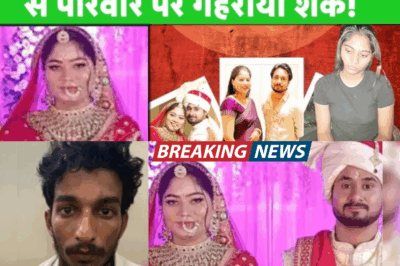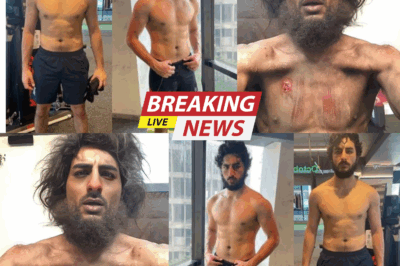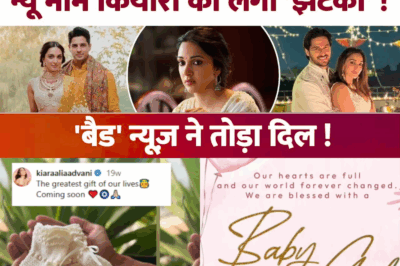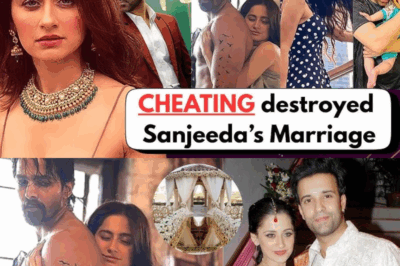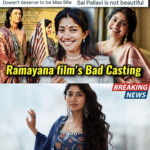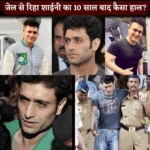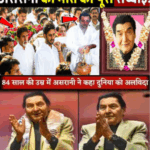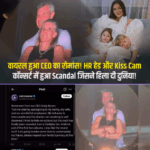Sai Pallavi as Sita: A Casting Controversy That’s Shaking the Internet
In the world of Indian cinema, few projects have generated as much buzz—and backlash—as the upcoming epic Ramayana. With a star-studded cast featuring Ranbir Kapoor as Lord Rama, Yash as Ravana, and Sai Pallavi as Maa Sita, the film promises to be a cinematic spectacle. However, not everyone is thrilled about the casting choices. Sai Pallavi, in particular, has become the center of a firestorm of criticism, with netizens and fans alike questioning her suitability for the iconic role of Sita. From memes mocking her appearance to resurfaced controversial statements, the actress is facing intense scrutiny. Why is there so much hate directed at Sai Pallavi, and will this controversy derail one of the most anticipated films of the decade? Let’s dive into this dramatic saga.
The Casting Announcement: A Spark That Ignited a Fire
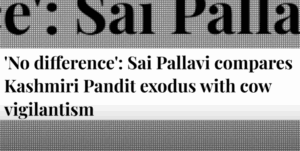
The moment the Ramayana casting was announced, social media platforms exploded with reactions. Ranbir Kapoor as Rama, Sai Pallavi as Sita, Yash as Ravana, Kajal Aggarwal as Mandodari (Ravana’s wife), and Rakul Preet Singh as Surpanakha (Ravana’s sister) became the talk of the town. While some praised the lineup for its diversity and star power, others were quick to criticize. Sai Pallavi, known for her natural beauty and powerful performances, found herself at the receiving end of harsh comments. Side-by-side photos of Sai Pallavi and Kajal Aggarwal began circulating, with sarcastic captions like, “Kajal is the wife, and she’s going to kidnap Sai Pallavi for her beauty.” The implication was clear: many felt Kajal would have been a more fitting choice for Sita.
Comments on Sai Pallavi’s social media pages turned vicious. “Don’t deserve to be Sita,” wrote one user. Another commented, “Kajal Aggarwal would be a more appropriate choice for Maa Sita rather than Sai Pallavi. She shouldn’t even get a side role.” Some went as far as to say, “She was never beautiful; she was just overhyped for being natural.” The trolling didn’t stop at her looks—her past statements were dragged into the spotlight, adding fuel to an already raging fire. But why is Sai Pallavi, a celebrated actress with a loyal fanbase, facing such intense backlash?
Beauty Standards and Unrealistic Expectations
At the heart of the criticism lies a debate over beauty standards and cultural expectations. Sita, in the Ramayana, is often depicted as the epitome of grace, purity, and beauty. Many fans have preconceived notions of how she should look on screen, often aligning with fair-skinned, conventionally glamorous actresses. Sai Pallavi, who proudly embraces her natural look and often appears without makeup both on and off-screen, doesn’t fit this mold for some critics. Her choice to shun cosmetic enhancements and present herself authentically has been both her strength and, in this case, her vulnerability.
In interviews, Sai Pallavi has spoken about her preference for a no-makeup look, stating, “If someone likes makeup, they should do it. I’m not saying it’s bad; it’s just my personal preference to feel confident without it.” While many admire her for this stance, others have weaponized it against her. Fans of Kajal Aggarwal, who is often seen with a more polished, glamorous appearance, argue that she better embodies the traditional image of Sita. This comparison echoes a similar controversy in the West with the casting of Snow White, where Rachel Zegler faced backlash for not matching the “snow-like fairness” described in the original story. Are we, as an audience, too rigid in our expectations of how iconic characters should look?
Past Controversies Resurface: A Calculated Attack?
Beyond her appearance, Sai Pallavi’s past statements have come back to haunt her. Two particular interviews from years ago are being recirculated online, painting her in a negative light. In one, while discussing violence, she referenced The Kashmir Files, a film about the exodus of Kashmiri Pandits, and compared it to an incident of mob lynching during COVID times, where a Muslim man driving a vehicle carrying cows was attacked amidst chants of “Jai Shri Ram.” She questioned, “Where is the difference between what happened then and what is happening now?” This statement was widely misinterpreted, with headlines suggesting she equated the Kashmiri Pandit tragedy with cow vigilantism—a comparison many deemed invalid and offensive.
Sai Pallavi later clarified her stance in a video, explaining that her words were taken out of context. “I do not support violence in any form. Both incidents—the Kashmiri Pandit exodus and the mob lynching—left me traumatized. I would never belittle a tragedy,” she said. While some fans accepted her explanation, others remained unconvinced, accusing her of making inappropriate comparisons. Another resurfaced interview from 2022 added to the controversy, where she discussed playing a character related to Naxals. She mentioned differing perspectives on violence, stating, “People in Pakistan think our Indian Army are terrorists because, from their point of view, they are being harmed. We feel the same about them. Perspectives are different, but I don’t understand violence.” This comment, too, drew ire for seemingly equating conflicting viewpoints in a sensitive context.
Sai Pallavi herself has hinted that this wave of hate might not be organic. In a recent interview, she suggested that someone could be orchestrating negative PR against her. “Why is it that statements I made two years ago resurface just before my films release?” she questioned. Could this be a deliberate attempt to sabotage her image ahead of Ramayana’s release? Bollywood has a history of such patterns—controversial statements by actors like Aamir Khan or Kareena Kapoor often resurface at strategic times, impacting their films. Is Sai Pallavi the latest victim of this trend?
Defenders and Supporters: A Divided Audience
Amidst the hate, Sai Pallavi has her defenders. Her fans argue that judging her based on looks is unfair and sad. “It would be lovely to see Sita Maa with lip fillers and cosmetic enhancements, which are clearly visible on Kajal’s face after pregnancy,” one supporter sarcastically remarked, highlighting the double standards in beauty critiques. Others praise Sai Pallavi’s acting prowess and authenticity, believing she will bring a unique depth to Sita’s character. Ranbir Kapoor, too, has faced some criticism for his casting as Rama, though the debate around him has largely settled, with fans appreciating his composed aura on screen. Yash, as Ravana, is already being hailed as a potential show-stealer, with reels predicting he might overshadow Ranbir.
The Stakes for Ramayana: A $500 Million Gamble
Ramayana is no ordinary film. With a staggering budget of over $500 million (approximately 4000 crore INR) for its two parts, it’s one of the most expensive Indian films ever made. The filmmakers have invested heavily in the project, including hefty fees for the star cast. Naturally, producers are wary of any controversy that could affect the film’s reception. Rumors suggest that Sai Pallavi has been requested to avoid giving interviews until the film’s release to prevent further backlash. While she will likely participate in press conferences, the strategy seems to be minimizing her public statements for now. Will this precaution be enough to shield the film from the storm surrounding her casting?
What’s Your Take on This Drama?
The controversy around Sai Pallavi raises larger questions about how we perceive actors in iconic roles. Should casting decisions be dictated by rigid beauty standards or past statements taken out of context? Is the hate against Sai Pallavi a reflection of societal biases, or is there a deeper, orchestrated effort at play? As Ramayana gears up for release, all eyes are on whether Sai Pallavi can silence her critics with her performance as Sita. What do you think—does she deserve the backlash, or is this an unfair attack on a talented actress? Share your thoughts in the comments below, and stay tuned for more updates on this gripping cinematic drama.
This article captures the dramatic essence of the controversy while providing a balanced view of the situation. Let me know if you’d like any adjustments or additional focus on specific aspects!
News
Raja Raghuvanshi Case: New Twists and Shocking Allegations Surface
Raja Raghuvanshi Case: New Twists and Shocking Allegations Surface The Raja Raghuvanshi case, involving a transport businessman from Indore, continues…
Coldplay Gate: A Kiss Cam Moment That Shook a $1.3 Billion Company
Coldplay Gate: A Kiss Cam Moment That Shook a $1.3 Billion Company Imagine yourself at a Coldplay concert, surrounded by…
Ibrahim Ali Khan Unleashes a Fierce New Avatar in Sarzameen: Fans Stunned by His Dramatic Transformation and Intense Action Training
Ibrahim Ali Khan Unleashes a Fierce New Avatar in Sarzameen: Fans Stunned by His Dramatic Transformation and Intense Action Training…
Bihar’s Bloody Monsoon: Where Hospitals Become Killing Fields and Police Offer Absurd Excuses
Bihar’s Bloody Monsoon: Where Hospitals Become Killing Fields and Police Offer Absurd Excuses This is not a scene from Gangs…
Sanjeeda Shaikh: Behind The Controversies That Shattered Her Perfect Image
Sanjeeda Shaikh: Behind The Controversies That Shattered Her Perfect Image Whenever controversies in the entertainment world are discussed, one name…
End of content
No more pages to load

